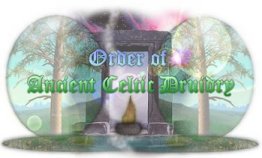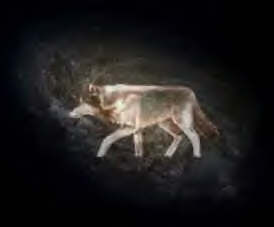
 Lesson Two
Lesson Two
Compiled by Dryad Katrein
Read Chapter Two of DJ Conway’s book, By Oak, Ash & Thorn: Modern Celtic Shamanism then answer the following questions, sending them to the Mystery School with “OAT 2 Celtic Shamanism from __________ (your magikal name)” in the subject line.
1. The term “shaman” has been used interchangeably with ________________ _______________ and _____________ ____________ by so called “civilized” societies.
2. T/F – A medicine man is always a shaman.
3. In the truest sense a shaman is what four things?
4. What cultures do people readily identify as having shamanic practitioners? (Name 4)
5. T/F – There is evidence of shamanic knowledge in the Mediterranean and Western Europe.
6. T/F – The ecstasy of Christian Mystics is a type of shamanism.
7. Where does the term Shaman come from?
8. Anthropologists have widely adopted the word “shaman” to apply to a great many cultures who view similar practitioners as __________, ____________, _____________, ______________, medicine men, etc.
9. Why does a shaman enter an altered state of consciousness?
10. T/F – While on their journeys into consciousness to other realms, shamans gain the help and support of spiritual “helpers.”
11. A true shaman is usually a ____________ first and a _____________ second.
12. What are some things that a shaman does NOT ordinarily deal in? (Name 3)
13. T/F – Shamanic methods the world over are intrinsically different because of the vast differences of the cultures in which these practices evolved.
14. T/F – A shaman does not expect the patient to participate in some form or fashion in the healing process.
15. A shaman has to become an expert in self-_________, self-___________, and __________________ in all its connotations.
16. In the “Shamanic State of Consciousness” or SSC, what are some things that you might find “real” there but which are considered fantasy in the “Ordinary State of Consciousness” or OSC? (name 3 specific things)
17. What are the three basic levels in the shamans universe?
18. T/F – Everyone who enters an ecstatic or trance state is a shaman.
19. Besides entering into an altered state of consciousness, what are two of the other criteria that need to be met for the journey to be a true shamanic experience?
20. A shaman must ALWAYS be aware that they have a ____________ ____________ in the SSC.
21. T/F – Shamanism cannot be misused and perverted to negative ends.
22. When does a shaman acquire a guardian spirit or animal?
23. Why do shamanic cultures believe a person becomes diseased (dis-eased)?
24. T/F A shaman secludes themselves from the world.
25. List all of the tools or objects that the author lists which shamans have and use all over the world. (hint – look on page 15)
26. The prime purpose of a shaman’s work is to help others whether this is ___________________ or simply involving the patient in ____________-_________.
27. T/F – Shamanism is one of the few spiritual arts that is not static.
Exercise:
Items you will need: a notebook or journal that is NOT currently being used (this will become your Shamanic journal and will be needed in later lessons), something to write with, an open heart, and a willingness for truth.
Begin to think about the journey you are about to undertake. Shamans are called the “Wounded Healers” for a reason. This exercise will begin the process of your own healing by giving you a point to start.
On the first page of your journal title it “Starting Point.” Divide the page in half longwise. Label one column “Things about me I like” and the other “Things about me that need healing.” Think about the physical you. What do you like? What needs healing or changed? An example:
Dryad Katrein’s journal may look like this:
Things about me I like
My sapphire blue eyes
Things about me that need healing
My addiction to sugar
Do the same thing for the mental you and the spiritual you. Be brutally honest with yourself. It will not be easy but it will help you in long run. This will give you ideas of what to work on when you start your travels to the Other worlds in later lessons. Take your time. This exercise is an ongoing exercise. After you have come to a “stopping point” (where you think you have finished) please do a short report and answer the following questions.
How did you feel while examining yourself? Were you surprised at what you put in each column? If so, how? After “completing” this exercise how do you feel about the journeys you are about to undergo?
Back to Celtic Study Hall | Back to Top
Northern Way Study Halls | Veli Celtic Study Hall | Top | Site Map

Credits:
Page Design & Misc. Graphics~ Caileadair
Created: 5/10/07


